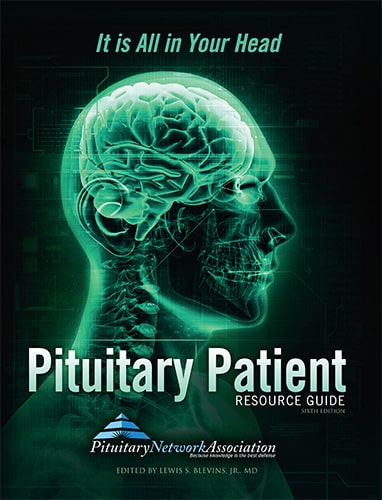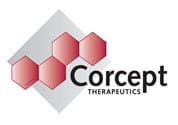Pituitary Glossary starting with B
Bacteria
Single-celled microorganisms.
Bacteria are single-celled microorganisms which can exist either as independent organisms or as parasites (dependent upon another organism for existance).
Examples of bacteria are Acidophilus, Chlamydia, Clostridium welchii or gangrene, E. coli, and Streptococcus or strep throat.
Benign
Not malignant, not cancerous.
In reference to a tumor; an abnormal mass of tissue that results when cells divide more than they should or do not die when they should. Tumors may be benign (not cancerous), or malignant (cancerous).
BIA
Bioelectric impedance. A non-invasive technique for measuring body composition.
Bioelectric impedance analysis is a method for determining the lean body mass. One type of BIA involves standing on a special scale with footpads while a small amount of electrical current is sent through the body to calculate the percentage of body fat. Another type of BIA involves electrodes placed on a wrist, an ankle, the back of the right hand and the top of the foot. The change in voltage between electrodes is then measured and body fat percentage is calculated.
Biological Response Modifier
A substance used in adjuvant therapy that takes advantage of the body’s own natural defense mechanisms to inhibit the growth of a tumor.
An agent or approach intended to modify the relationship between tumor and host by modifying a host’s biological response to tumor cells, with resultant therapeutic benefit. This includes agents or approaches which utilize or modify immunological mechanisms; naturally occurring or recombinantly produced regulatory molecules (e.g., cytokines, growth or differentiation factors); and monoclonal antibodies and their derivatives.
Biopsy
Examination of a small amount of tissue taken from the patient’s body to make a diagnosis.
The removal of cells or tissues for examination by a pathologist. The pathologist may study the tissue under a microscope or perform other tests on the cells or tissue. There are many different types of biopsy procedures. The most common types include: (1) incisional biopsy, in which only a sample of tissue is removed; (2) excisional biopsy, in which an entire lump or suspicious area is removed; and (3) needle biopsy, in which a sample of tissue or fluid is removed with a needle. When a wide needle is used, the procedure is called a core biopsy. When a thin needle is used, the procedure is called a fine-needle aspiration biopsy.
Blood Count
The calculated number of white or red blood cells in a cubic millimeter of blood.
A test to check the number of red blood cells, white blood cells, and platelets in a sample of blood. Also called complete blood count and CBC.
White blood cell (WBC) refers to a blood cell that does not contain hemoglobin. White blood cells include lymphocytes, neutrophils, eosinophils, macrophages, and mast cells. These cells are made by bone marrow and help the body fight infections and other diseases.
Red blood cell (RBC) is a cell that contain hemoglobin, carring oxygen to all parts of the body. Also called erythrocyte.
BMD
Bone mineral density.
A measure of the amount of minerals (mostly calcium and phosphorous) contained in a certain volume of bone. Bone mineral density measurements are used to diagnose osteoporosis (a condition marked by decreased bone mass), to see how well osteoporosis treatments are working, and to predict how likely the bones are to break. Low bone mineral density can occur in patients treated for cancer. A bone mineral density scan is an imaging test that measures bone density (the amount of bone mineral contained in a certain volume of bone) by passing x-rays with two different energy levels through the bone through an area of the body such as the hip, hand, or foot for signs of mineral loss and bone thinning. It is used to diagnose osteoporosis (decrease in bone mass and density). Also called DEXA scan, BMD scan, dual energy x-ray absorptiometric scan, dual x-ray absorptiometry, DXA, and DEXA.
BMI
Body mass index. A measure of obesity calculated from weight and height.
Body mass index (BMI) is used to assess weight and determine whether a patient is at a healthy weight. Being overweight puts strain on the heart and can lead to serious health problems such as type 2 diabetes, heart disease, high blood pressure, sleep apnea, varicose veins, and other chronic conditions.
BMR
Basal metabolic rate.
The basal metabolic rate (BMR) is the number of calories the body uses when it is at rest. The basal metabolic rate is based on basic bodily functions such as breathing, digesting, and energy used for the heart and brain function. Age, sex, body weight, amount of muscle tissue and level of physical activity affect the basal metabolic rate.
Bone Density
The amount of bone tissue in a certain volume of bone.The amount of bone tissue in a certain volume of bone.
A measure of the amount of minerals (mostly calcium and phosphorous) contained in a certain volume of bone. Bone density measurements are used to diagnose osteoporosis (a condition marked by decreased bone mass), to see how well osteoporosis treatments are working, and to predict how likely the bones are to break. Low bone density can occur in patients treated for cancer. Also called BMD, bone mass, and bone mineral density.
Bone Density Management
Used to assess the strength and “age” of a bone by measuring its density.
Most commonly determined by DEXA scan of the spine and hip. See BMD or bone mineral density.
Bromocriptine
An example of a dopamine agonist.
Used to treat prolactinomas as dopamine and dopamine-like drugs suppress prolactin production and secretion and can lead to tumor shrinkage.









